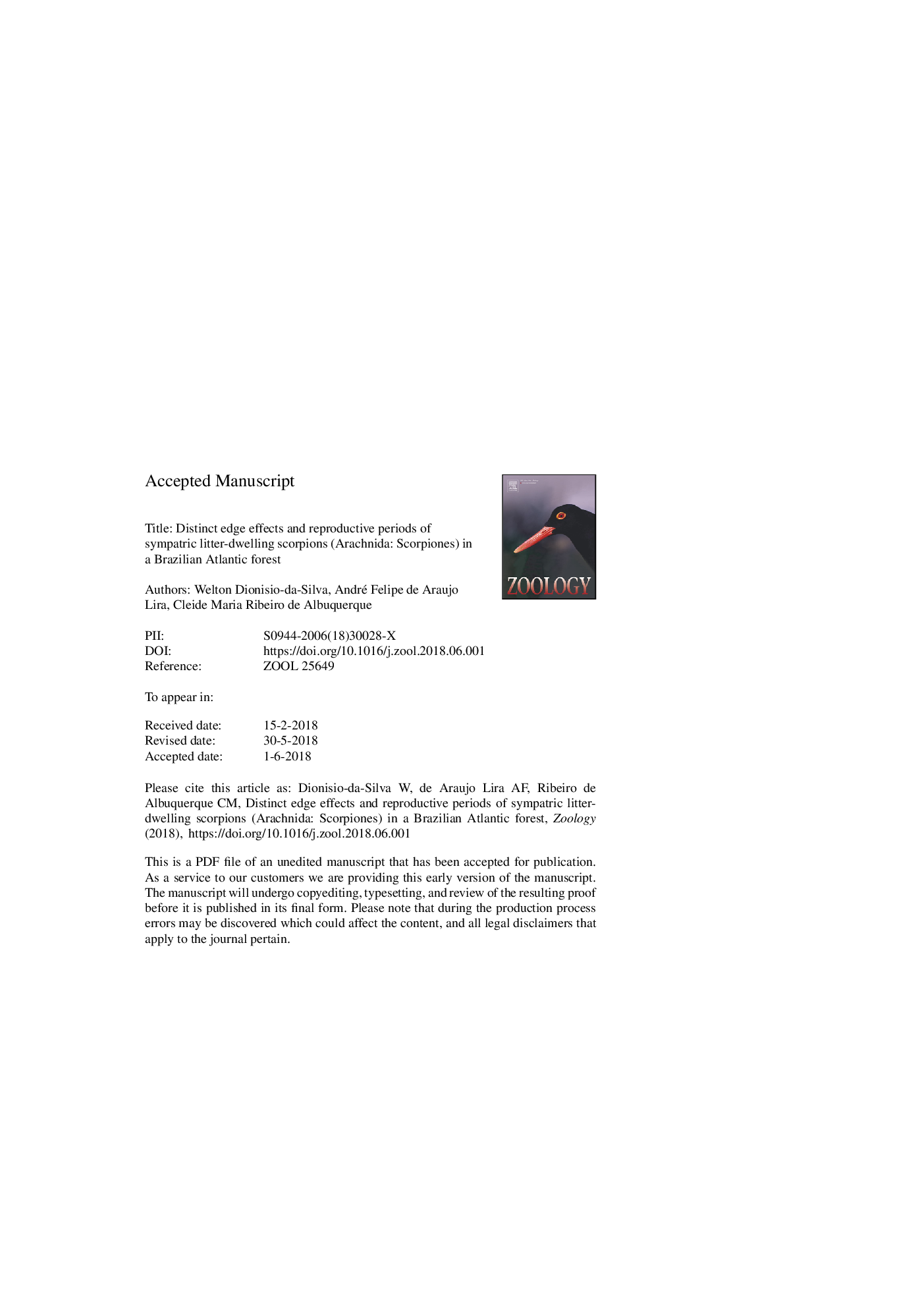| Article ID | Journal | Published Year | Pages | File Type |
|---|---|---|---|---|
| 8626918 | Zoology | 2018 | 27 Pages |
Abstract
Edge effects have drastically affected species living in tropical forests. However, understanding how species respond to edge effects remains a challenge, owing to the many factors involved and different responses of each species thereto. Here, we analyzed how the abundance of two sympatric scorpion species (Tityus pusillus and Ananteris mauryi) and their potential prey varied as a function of microhabitat changes (litter depth, dry mass, and leaf shape) from edge to interior forest habitats. We further analyzed the contribution of potential prey to scorpion abundance and reproductive periods. Data were collected monthly at three 300-m² transects/site at distances of 10, 100, and 200 m from the forest edge in a fragment of the Atlantic forest in northeastern Brazil, between April 2016 and March 2017. Scorpions responded differentially to edge effects, with A. mauryi abundance being similar along the edge-interior gradient, whereas T. pusillus had a higher abundance in the interior. As T. pusillus inhabit the top layer of the leaf litter, this species will possibly be more influenced by edge effects. In contrast, being a humicolous scorpion and inhabiting the bottom layers of leaf litter, A. mauryi would not be influenced by edge effects as much as T. pusillus. The reproductive period also was distinct between the two species, with T. pusillus reproducing in the dry season and A. mauryi in the rainy season. The oscillation in the abundance of different groups of prey at different periods maintained the overall prey abundance at a relatively constant level throughout the year, mitigating the effects of prey availability on the abundance and reproductive period of the scorpions. These results suggest that microhabitat exploitation is a key factor to sustain litter-dwelling scorpions in disturbed forest remnants and that T. pusillus can be an ecological indicator of edge effects.
Related Topics
Life Sciences
Agricultural and Biological Sciences
Animal Science and Zoology
Authors
Welton Dionisio-da-Silva, André Felipe de Araujo Lira, Cleide Maria Ribeiro de Albuquerque,
